| |
|
|
| |
Its cicada time.
Thu 2nd February, 2017
|
|
|
|
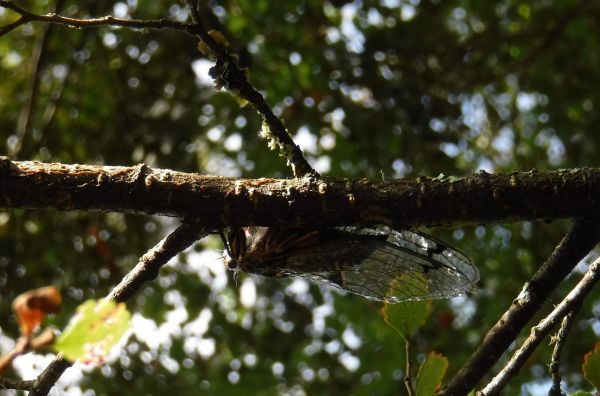 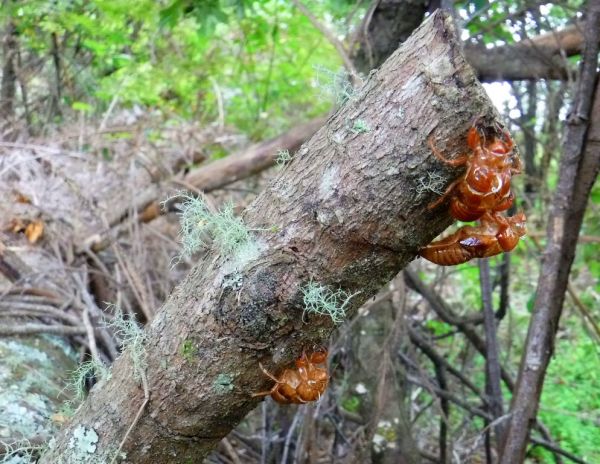
Summer finally arrived last week but has just as quickly disappeared again. Looking out of the window its overcast with steady drizzle at the moment although its forecast to brighten up as we head towards the holiday weekend.
The brief warm spell after the rain provided ideal conditions for cicada nymphs to burrow up from their underground chambers. And all along the river the undergrowth is littered with discarded husks. Evidence of the biggest emergence so far this summer. Numbers will probably peak {if they haven't already} over the next few days but adult cicadas live for around five weeks so you've still got time to dust off your cicada patterns.
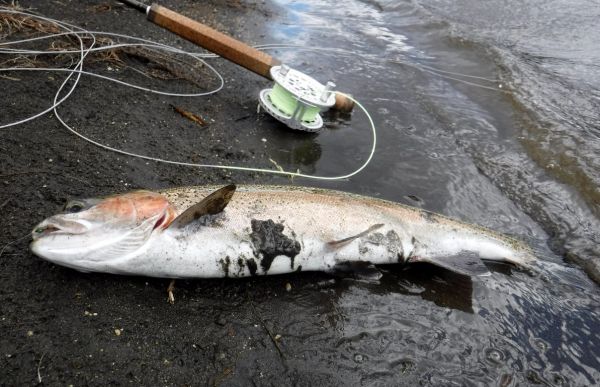
Some anglers have already done quite well this week fishing the cicada. I was on the river yesterday and had three fish in different locations come for the big dry so they're well worth trying now. At first the tried and trusted dyed olive deer hair versions work well. But if previous years are anything to go by they quickly tire of them. Of course by then they're switched on to big surface bugs and the more exotic foam patterns can be a better choice. The addition of a dropper nymph under the dry will often take fish if they turn away from the dry fly at the last second ... like the one in the pic above.
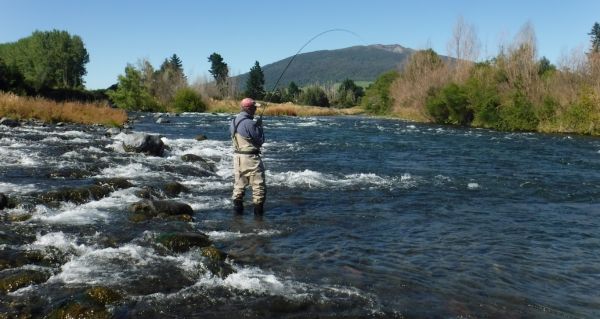 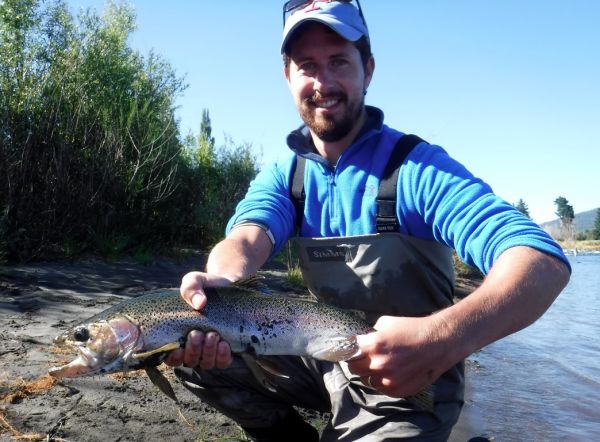
Since the last report I'd found the fishing tough some days, especially during that unexpected cold snap. But it hasn't been too bad this week. Many of the rainbows are now back in the lake and some of those still recovering in the river will join them in the next month. As fish numbers decrease finding a few becomes a little more difficult and its more important than ever to move around. If you've never fished here before this is all part of the annual cycle on the Tongariro and I can think of far worse things to do than walk the banks of such a beautiful river. There are still fish to be caught ... it just involves a bit more effort than lobbing out globugs during the winter runs.
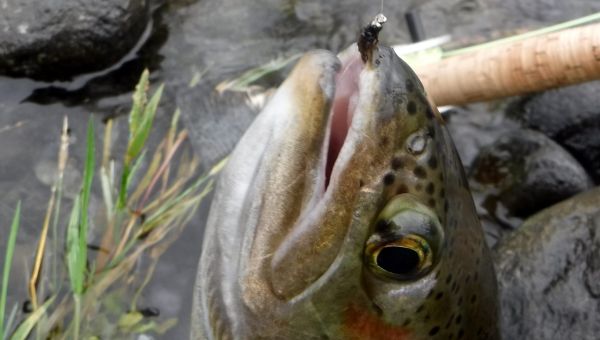 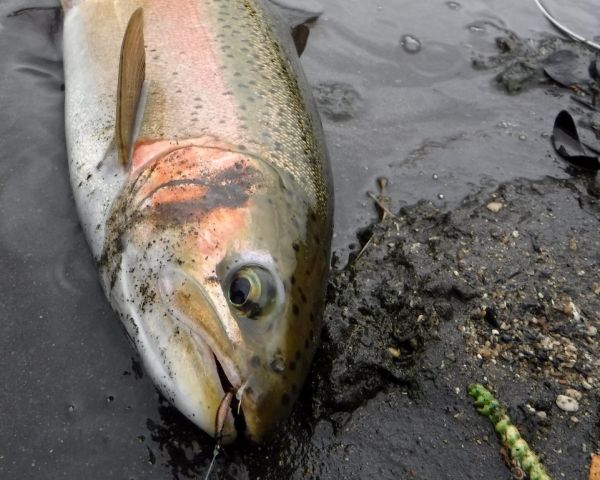
As long as you change tactics, lighten everything up and take in whats going on around you its still possible to have a lot of fun.
There's an abundance of insect life in the Tongariro including a healthy caddis population and caddis imitations always work well.
Nymphs and larvae tend to be darker in winter and most people find they do better with "green" caddis in the colder months and "white" caddis in summer.
The latter have been working well for weeks so try a light brown caddis larvae off the bomb or a weighted pupa under the dry.
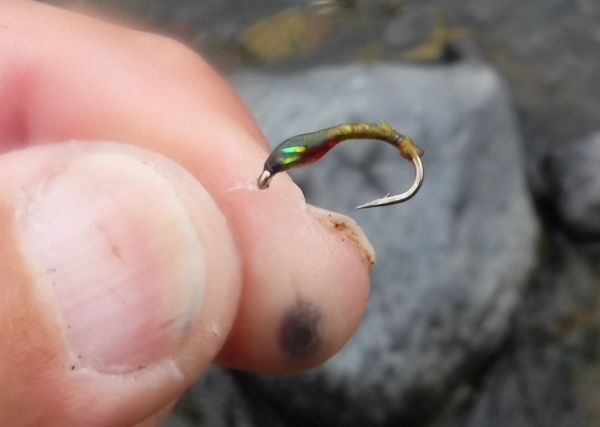
Talking of flies ... one of the worst kept secrets on the Tongariro is the buzzer. The buzzer is the anglers term for the larvae of non-biting midges called chironomids and is usually associated with still-water fly fishing. But midges can be found in many types of waterways including the slower parts of rivers.
Their life span is often quite short, sometimes just six weeks from egg to adult and inevitably through their life cycle trout will eat them.
When I was growing up in Wales in the fifties and sixties fly fishing was still very much regarded as a pastime for the more well off in society. Equipment was often expensive and gaining access to good trout water involved joining a club or syndicate. Many of which had long waiting lists. But during this time local authorities began to open up reservoirs to the public for recreational use, including fishing.
Some of them were stocked with trout and soon waters like Blagdon, Chew Valley and Draycote became household names amongst fly fishermen all over the UK.
Land owners were quick to realise they could make a buck or two out of this and man made lakes and ponds began to spring up everywhere. Since then there has been a massive increase in the availability of still-water trout fisheries in the UK.
I've read somewhere that buzzers were first used in still waters in the 1920's but it was around the mid sixties that I first began to take note of this strange "buzz word". Up until then I'd never heard of them.
Pretty early on the experts of the day had realised the importance of chironomids in still water entomology and used them with great success. They fished them both from boats and the shore although as I recall the techniques involved were slightly different. So it wasn't long before your average "Joe Bloggs" angler began to take an interest ... keen to learn all about this new method.
Prior to that most anglers fishing reservoirs from the bank used shooting heads to cast as far as they could and then stripped back one of the popular lures of the time. The one I always remember is the "Baby Doll" made famous by angling guru Bob Church. This was a white fly designed to imitate fry.
Over the years the "new sport" spawned countless magazines and books dedicated to all aspects of still-water fly fishing. Including techniques, patterns and tackle specifically for "buzzer fishing".
And as a result of all this, nowadays I doubt there is a serious still water fly fisher anywhere in the UK who hasn't got a selection of buzzers in his box.
Anyway ... where was I?
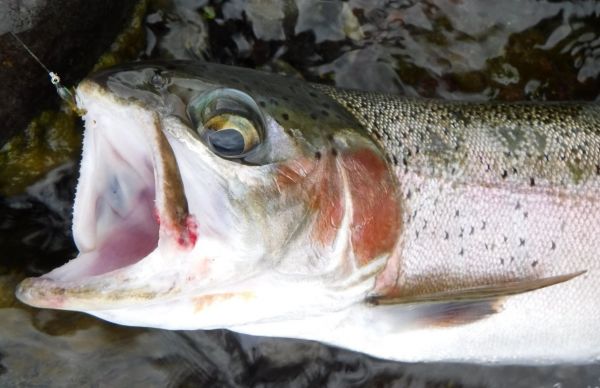
Anglers in the know have been using buzzers on the Tongariro for years. I prefer to fish them under the dry in the slow water next to a seam or where the river spills in at the top of a pool. But I would imagine they'll work in most places and I know anglers who successfully fish them off the bomb. After all if they've entered the "drift" trout will scoff them.
I still have some of the buzzer patterns I brought with me from the UK. Over there its common to use these flies tied on Size 10's sometimes even 8's. But I find I do better over here with 14's and 12's which is probably why I've still got the others.
There are thousands of buzzer patterns out there and they come in all colors. But they're always tied skinny to better suggest the natural. Through trial and error I've found olive green with copper cheeks work ok on the Tongariro. You can tie them with or without small beads but because of the skinny profile and the fact they're often tied using UV resin they sink quite quickly anyway. This also makes them very durable and unless you lose them you can catch fish after fish on the same fly.
With the vast assortment of modern fly tying materials available your next "killer pattern" is limited only by your imagination ... so if you haven't already ... give them a try.
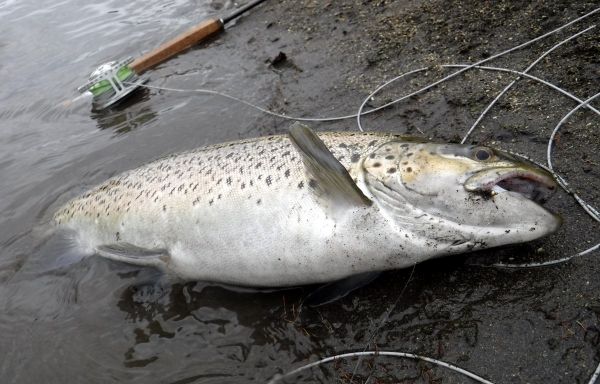
As you would expect at this time of year more browns are moving up and over the coming weeks they'll begin to figure more and more in the reports. This "football" of a fish picked up the rubber leg bomb yesterday and unusually came quite late in the afternoon.
Nowhere really standing out for rainbows its just a case of keep moving until you find them.
The constant wind we've had recently has made things a bit hit or miss again for anglers fishing the evening rise but it may ease today and tomorrow.
Sunny spells for the weekend ... then next week its back to yet more rain and showers.
With plenty of cicadas around we should get some exciting top water action over the next week or two ... but its always a difficult one to predict. We'll just have to wait and see what the fishing gods have lined up for us.
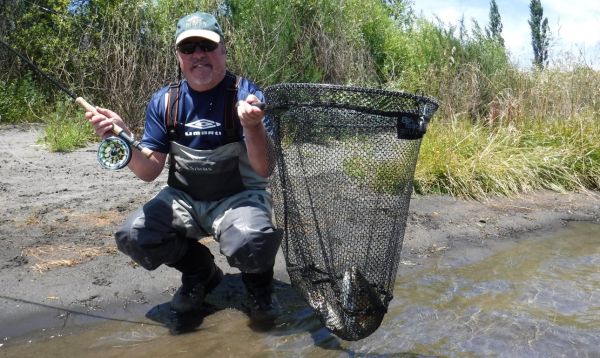
Enjoy the weekend.
Mike |
|
|
| Back to Top |
|
|
|
|
|
|
|